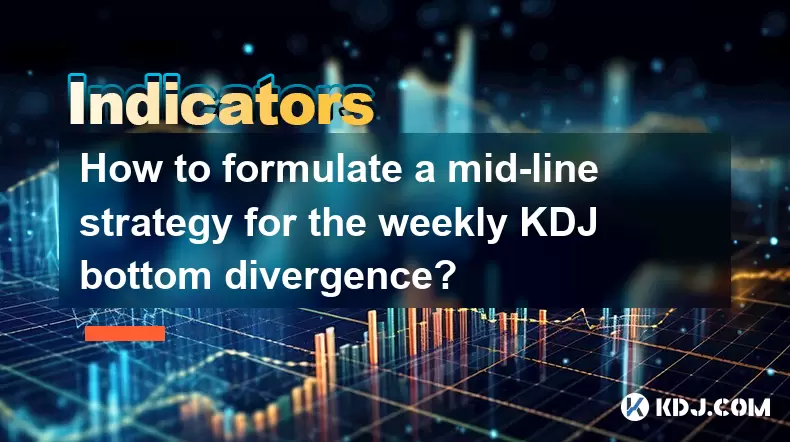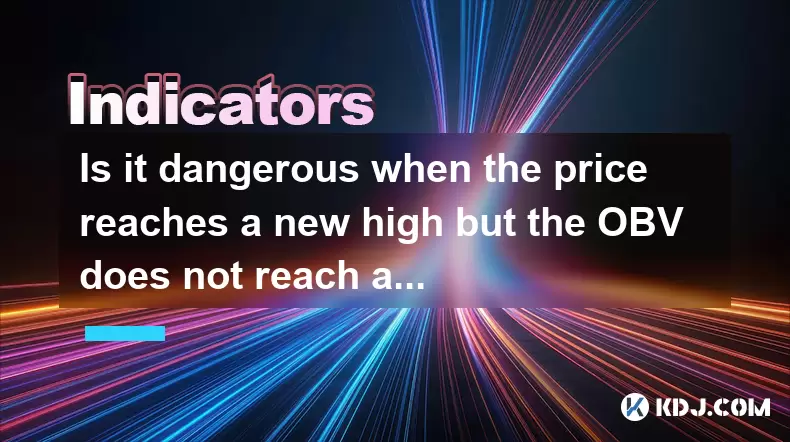-
 Bitcoin
Bitcoin $106,754.6083
1.33% -
 Ethereum
Ethereum $2,625.8249
3.80% -
 Tether USDt
Tether USDt $1.0001
-0.03% -
 XRP
XRP $2.1891
1.67% -
 BNB
BNB $654.5220
0.66% -
 Solana
Solana $156.9428
7.28% -
 USDC
USDC $0.9998
0.00% -
 Dogecoin
Dogecoin $0.1780
1.14% -
 TRON
TRON $0.2706
-0.16% -
 Cardano
Cardano $0.6470
2.77% -
 Hyperliquid
Hyperliquid $44.6467
10.24% -
 Sui
Sui $3.1128
3.86% -
 Bitcoin Cash
Bitcoin Cash $455.7646
3.00% -
 Chainlink
Chainlink $13.6858
4.08% -
 UNUS SED LEO
UNUS SED LEO $9.2682
0.21% -
 Avalanche
Avalanche $19.7433
3.79% -
 Stellar
Stellar $0.2616
1.64% -
 Toncoin
Toncoin $3.0222
2.19% -
 Shiba Inu
Shiba Inu $0.0...01220
1.49% -
 Hedera
Hedera $0.1580
2.75% -
 Litecoin
Litecoin $87.4964
2.29% -
 Polkadot
Polkadot $3.8958
3.05% -
 Ethena USDe
Ethena USDe $1.0000
-0.04% -
 Monero
Monero $317.2263
0.26% -
 Bitget Token
Bitget Token $4.5985
1.68% -
 Dai
Dai $0.9999
0.00% -
 Pepe
Pepe $0.0...01140
2.44% -
 Uniswap
Uniswap $7.6065
5.29% -
 Pi
Pi $0.6042
-2.00% -
 Aave
Aave $289.6343
6.02%
How to formulate a mid-line strategy for the weekly KDJ bottom divergence?
Weekly KDJ bottom divergence signals potential bullish reversals in crypto when price makes lower lows but KDJ forms higher lows, offering strategic entry points with proper confirmation.
Jun 17, 2025 at 04:29 pm

Understanding Weekly KDJ Bottom Divergence
KDJ is a momentum oscillator widely used in technical analysis to identify overbought and oversold conditions. The weekly KDJ bottom divergence occurs when the price makes a lower low, but the KDJ indicator forms a higher low, suggesting a potential reversal from a downtrend to an uptrend. This divergence is especially significant in weekly charts because it often signals long-term trend changes. In cryptocurrency trading, where volatility is high, recognizing this pattern can offer strategic entry points.
Identifying Weekly KDJ Bottom Divergence in Cryptocurrency Charts
To spot a weekly KDJ bottom divergence, traders must first ensure that their charting tools support the KDJ (also known as the stochastic oscillator) on a weekly timeframe. Most modern platforms like TradingView or Binance's native tools allow this setting.
- Select the weekly time frame.
- Apply the KDJ indicator with default settings (K=9, D=3, J=3).
- Observe if the price creates a new lower low, while the KDJ line forms a higher low.
This mismatch between price movement and indicator behavior indicates weakening bearish pressure and hints at a possible bullish reversal. It’s crucial to confirm this divergence with volume patterns or other supporting indicators.
Confirming Divergence with Volume and Moving Averages
Once a potential weekly KDJ bottom divergence is identified, traders should not act immediately. Instead, they should use additional tools to confirm the signal. One effective method is analyzing volume trends. If volume increases during the formation of the divergence, it reinforces the likelihood of a reversal.
Another confirmation technique involves using moving averages:
- Overlay the 50-week and 200-week moving averages on the chart.
- Watch for the price to cross above these averages after the divergence appears.
These confirmations help filter out false signals and increase the probability of successful trades in volatile crypto markets.
Entry Points and Risk Management Strategy
After confirming the weekly KDJ bottom divergence, the next step is to determine optimal entry points and implement risk management strategies.
For entries:
- Wait for the KDJ lines (K and D) to cross above the 20 level, indicating a shift from oversold conditions.
- Enter the trade when the price closes above the recent swing high formed during the divergence.
Regarding risk:
- Place a stop-loss just below the recent swing low.
- Set a take-profit level based on historical resistance zones or Fibonacci extensions.
Proper position sizing is essential due to the unpredictable nature of cryptocurrencies. Traders should allocate only a small percentage of their portfolio to any single trade based on this strategy.
Integrating the Strategy into a Broader Trading Plan
A standalone weekly KDJ bottom divergence strategy may not be sufficient for consistent profitability. Therefore, integrating it into a broader trading plan that includes fundamental analysis and macroeconomic factors is crucial, especially in the crypto space where news and regulatory changes heavily influence prices.
Traders should also consider combining this strategy with other technical tools such as:
- RSI (Relative Strength Index) for further confirmation of overbought or oversold levels.
- MACD (Moving Average Convergence Divergence) to gauge momentum shifts.
- Support and resistance levels to enhance timing accuracy.
By aligning multiple indicators and analyses, traders can build a more robust system for navigating the complexities of cryptocurrency markets.
Frequently Asked Questions
Q1: Can the weekly KDJ bottom divergence strategy be applied to all cryptocurrencies?
Yes, this strategy is applicable across various cryptocurrencies. However, its effectiveness may vary depending on market liquidity and volatility. Larger-cap coins like Bitcoin and Ethereum tend to produce more reliable signals due to higher trading volumes and clearer price action.
Q2: What are common mistakes to avoid when using the weekly KDJ bottom divergence?
One major mistake is entering a trade solely based on divergence without confirmation. Another is ignoring broader market conditions. Traders should always wait for confirmation signals and assess the overall trend before executing trades.
Q3: How does the weekly KDJ compare to daily KDJ for divergence signals?
The weekly KDJ provides fewer but more reliable divergence signals compared to the daily KDJ. While daily charts offer more frequent opportunities, weekly divergences are often more significant and suited for longer-term positions in cryptocurrency trading.
Q4: Should I adjust KDJ parameters for cryptocurrency trading?
While the default settings (K=9, D=3, J=3) work well, some traders tweak parameters to suit crypto volatility. However, changing settings too frequently can lead to inconsistent results. It’s best to backtest different configurations before live trading.
Disclaimer:info@kdj.com
The information provided is not trading advice. kdj.com does not assume any responsibility for any investments made based on the information provided in this article. Cryptocurrencies are highly volatile and it is highly recommended that you invest with caution after thorough research!
If you believe that the content used on this website infringes your copyright, please contact us immediately (info@kdj.com) and we will delete it promptly.
- 2025-W Uncirculated American Gold Eagle and Dr. Vera Rubin Quarter Mark New Products
- 2025-06-13 06:25:13
- Ruvi AI (RVU) Leverages Blockchain and Artificial Intelligence to Disrupt Marketing, Entertainment, and Finance
- 2025-06-13 07:05:12
- H100 Group AB Raises 101 Million SEK (Approximately $10.6 Million) to Bolster Bitcoin Reserves
- 2025-06-13 06:25:13
- Galaxy Digital CEO Mike Novogratz Says Bitcoin Will Replace Gold and Go to $1,000,000
- 2025-06-13 06:45:13
- Trust Wallet Token (TWT) Price Drops 5.7% as RWA Integration Plans Ignite Excitement
- 2025-06-13 06:45:13
- Ethereum (ETH) Is in the Second Phase of a Three-Stage Market Cycle
- 2025-06-13 07:25:13
Related knowledge

How to interpret the low opening the next day after the long lower shadow hits the bottom?
Jun 18,2025 at 12:22am
Understanding the Long Lower Shadow Candlestick PatternIn technical analysis, a long lower shadow candlestick is often seen as a potential reversal signal in a downtrend. This pattern occurs when the price opens, trades significantly lower during the session, but then recovers to close near the opening price or slightly above. The long wick at the botto...

How to operate the RSI indicator repeatedly in the 40-60 range?
Jun 18,2025 at 12:56am
Understanding the RSI Indicator and Its RelevanceThe Relative Strength Index (RSI) is a momentum oscillator widely used in cryptocurrency trading to measure the speed and change of price movements. Typically, the RSI ranges from 0 to 100, with levels above 70 considered overbought and below 30 considered oversold. However, when the RSI repeatedly stays ...

Why is the volume ratio suddenly enlarged three times but the price fluctuation is small?
Jun 18,2025 at 04:42am
Understanding the Relationship Between Trading Volume and Price MovementIn the world of cryptocurrency trading, volume is a crucial metric that reflects the number of assets traded within a specific time frame. It often serves as an indicator of market interest and liquidity. However, there are instances where trading volume surges dramatically—sometime...

Is the rebound effective after the CCI indicator crosses below -100?
Jun 18,2025 at 11:42am
Understanding the CCI Indicator and Its Role in Cryptocurrency TradingThe Commodity Channel Index (CCI) is a versatile technical analysis tool widely used across financial markets, including cryptocurrency trading. It helps traders identify overbought or oversold conditions, as well as potential trend reversals. The CCI oscillates around a zero line and...

How strong is the MACD golden cross below the zero axis?
Jun 17,2025 at 11:00pm
Understanding the MACD Indicator in Cryptocurrency TradingThe Moving Average Convergence Divergence (MACD) is one of the most widely used technical indicators among cryptocurrency traders. It helps identify potential trend reversals, momentum shifts, and entry or exit points. The MACD consists of three main components: the MACD line, the signal line, an...

Is it dangerous when the price reaches a new high but the OBV does not reach a new high?
Jun 18,2025 at 06:14am
Understanding On-Balance Volume (OBV) in Cryptocurrency TradingIn the world of cryptocurrency trading, technical indicators play a crucial role in analyzing market behavior and predicting future price movements. One such widely used indicator is the On-Balance Volume (OBV), which helps traders assess the strength of buying or selling pressure behind pri...

How to interpret the low opening the next day after the long lower shadow hits the bottom?
Jun 18,2025 at 12:22am
Understanding the Long Lower Shadow Candlestick PatternIn technical analysis, a long lower shadow candlestick is often seen as a potential reversal signal in a downtrend. This pattern occurs when the price opens, trades significantly lower during the session, but then recovers to close near the opening price or slightly above. The long wick at the botto...

How to operate the RSI indicator repeatedly in the 40-60 range?
Jun 18,2025 at 12:56am
Understanding the RSI Indicator and Its RelevanceThe Relative Strength Index (RSI) is a momentum oscillator widely used in cryptocurrency trading to measure the speed and change of price movements. Typically, the RSI ranges from 0 to 100, with levels above 70 considered overbought and below 30 considered oversold. However, when the RSI repeatedly stays ...

Why is the volume ratio suddenly enlarged three times but the price fluctuation is small?
Jun 18,2025 at 04:42am
Understanding the Relationship Between Trading Volume and Price MovementIn the world of cryptocurrency trading, volume is a crucial metric that reflects the number of assets traded within a specific time frame. It often serves as an indicator of market interest and liquidity. However, there are instances where trading volume surges dramatically—sometime...

Is the rebound effective after the CCI indicator crosses below -100?
Jun 18,2025 at 11:42am
Understanding the CCI Indicator and Its Role in Cryptocurrency TradingThe Commodity Channel Index (CCI) is a versatile technical analysis tool widely used across financial markets, including cryptocurrency trading. It helps traders identify overbought or oversold conditions, as well as potential trend reversals. The CCI oscillates around a zero line and...

How strong is the MACD golden cross below the zero axis?
Jun 17,2025 at 11:00pm
Understanding the MACD Indicator in Cryptocurrency TradingThe Moving Average Convergence Divergence (MACD) is one of the most widely used technical indicators among cryptocurrency traders. It helps identify potential trend reversals, momentum shifts, and entry or exit points. The MACD consists of three main components: the MACD line, the signal line, an...

Is it dangerous when the price reaches a new high but the OBV does not reach a new high?
Jun 18,2025 at 06:14am
Understanding On-Balance Volume (OBV) in Cryptocurrency TradingIn the world of cryptocurrency trading, technical indicators play a crucial role in analyzing market behavior and predicting future price movements. One such widely used indicator is the On-Balance Volume (OBV), which helps traders assess the strength of buying or selling pressure behind pri...
See all articles

























































































